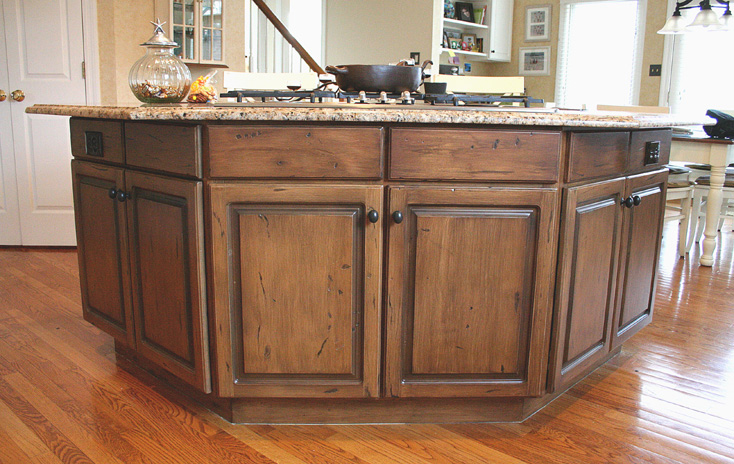Professional Brush Finishes
Considering the finish options for a kitchen when the architect wants an old-fashioned brushed-on appearance. October 19, 2013
Question (WOODWEB Member) :
Can anyone recommend a kitchen cabinet grade finish that is brush applied? We are building a kitchen that the architect has specified a brush finish for an antique look. I am looking for a recommendation from someone who has experience with this look.
Forum Responses
Finishing Forum
From contributor M:
Can you be a little more specific in terms of whether you are going for a clear or pigmented finish?
From Contributor G:
Use an oil enamel. Tell them after it is painted they need to be careful for about one month. After that it will be fully cured and pretty darn hard.
From Contributor N:
I recently completed a job where just the kitchen island spec was exactly that old time brushed-out look. A good oil enamel (do they exist anymore - BM Satin Impervo use to be the gold standard) will give the best copy of a 1950's brush job but I went with and am partial to PPG's Manor Hall pearl sheen acrylic enamel. It lays out nice if you prime with something with good hold-out and potential to sand (I like pimented shellac). Add some Floetrol to your finish and limit yourself to just one coat a day. This method has three distinct advantages over oil enamel. The new oil enamels will yellow in fairly short order especially whites and (strangely enough) if they are hidden from sunlight. They take hours to be dust free and the oil smell can linger for weeks. For added protection on the job I did I sprayed a coat of targets waterborne pre-cat CV on it after four days of drying.
From contributor J:
I have never done it, but I know another local guy that does these finishes all the time. He sprays the finish as normal and then uses a brush to tip off the surface and get the brush strokes.
From contributor R:
"Architect has specified a brush finish for an antique look". I hope you are submitting samples on this. It has the feel of potential disaster. A properly done professional brush finish wouldn't have any brush marks in it. So does that mean that the architect wants exaggerated brush marks to make it look "antique"? I think I would need more clarification from the architect before I supplied any samples.
From Contributor G:
What is funny about these finishes is in the old days when they brushed them on the painter was using finishes that would level out as good as available and they were looking for a finish without visible brush strokes. Now come to the future and they want to see the brush strokes. Something the olden day painters were trying to avoid at all costs.
From contributor D:
I am in agreement with Contributor R and Contributor G. Many years ago while apprenticing with a German Master craftsman my first task in finishing was to learn how to lay down a perfectly brushed finish. This entailed no visible brush marks. I needed to apply a ground sand flawlessly, apply primers, and finally apply the finish coat. If my boss was not happy I needed to start the whole process over. Thank god there was no film limits on the finish materials. I am continually frustrated by designers and architects allowing the house painters to finish cabinetry elements in homes for the desired finish of yester year. All that being said I would apply a primer by spray app. and tip off as mentioned. Sand lightly to preserve the sacred brush marks and finish with spray application over the brush marked primer.
Note: Does the architect also want you to ignore the proper painting patterns with the brush marks (stiles, rails and panels) or does he just want the brush marks in any random pattern? By all means use an oil enamel. BM Satin Impervo was my go-to paint.
From contributor A:
It's still hard to deny that there is a difference between a well applied brush finish and a modern spray finish, regardless of what a finisher is looking to achieve with either. Customers may reasonably prefer either look/product. So far the only brush applied finish that I'll use is Allback linseed paint. The material cost is about the same as a spray finish, but the labor is four-five times as much.
